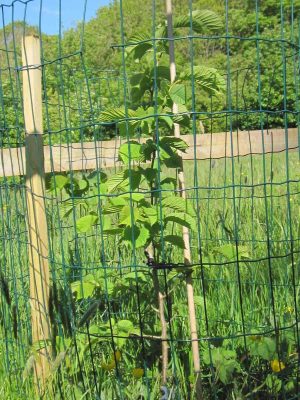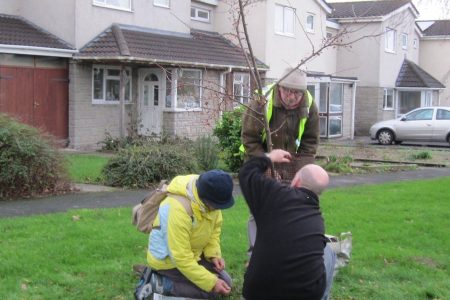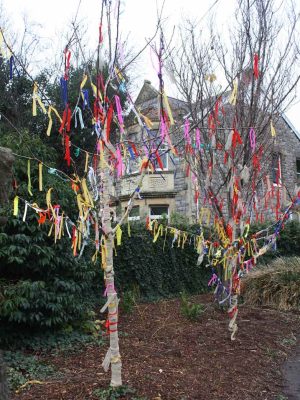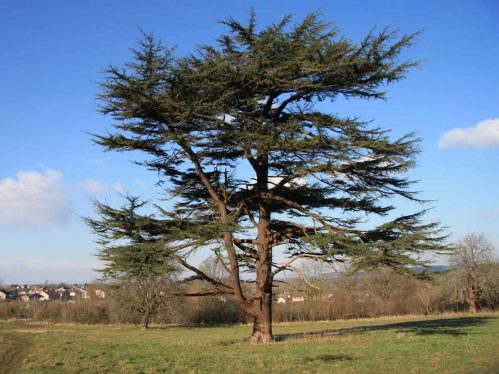
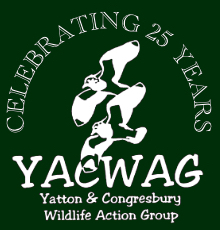
Wildlife
Trees
______
Trees are amazing! They provide shade and shelter, food and pure oxygen as well as homes for wildlife. They get their energy from sunlight and turn carbon and other minerals and water in the air and soil into wood.
Local trees
In local woods such as on Cadbury Hill and Kings Wood Congresbury, or our own nature reserve at Littlewood on Kenn Moor, the natural single-stemmed species commonly seen are: oak, ash, hawthorn, alder, willow, hazel, holly and sycamore. Beech and horse chestnut have been planted but do not really belong in this area. Small-leaved lime is rare now but used to be the most common tree here in pre-historic times.
In the hedges or woodland edges the list is extended by: spindle, native crab apple, blackthorn, purging buckthorn, dogwood, wild privet, wayfaring tree and elms (which no longer survive as big trees, except wych elm – which can be found on Cadbury Hill woodlands as well as various spots around the area).
Along road and riversides in more open situations which are damp, poplars and willows grow. Both of these often hybridise so can be a challenge to identify. YACWAG is hoping to trace and propagate the rare native black poplar, some examples of which are known from the local parishes.
Fruit trees, especially apples, grew in numerous orchards locally but most orchards have fallen into disuse or have been built on. The orchard next to the Grange, Moor Road, Yatton, has some old cider apple trees with a very rare fungus (the dog’s tooth fungus). When this orchard was sold off for development YACWAG planted an orchard in the small field we owned on the other side of the road. We have planted traditional varieties of apple and hopefully one day the fungus will find its way to them and ensure its survival in this area.
In 2000 Yatton and Congresbury each received a Millennium Yew under a Conservation Foundation scheme. One was given to every parish who wanted one – they had been propagated from some of the oldest yews in the UK. Yatton’s can be seen on the north western side of the parish churchyard near the Chapter House, while Congresbury’s is on the south side of St Andrew’s churchyard.
In 2013 YACWAG joined the Great British Elm Project. Cuttings were taken from mature trees that appeared to have resisted Dutch Elm Disease for over 60 years. In Yatton an elm tree was planted on the Local Nature Reserve at Cadbury Hill. Another was planted in St Andrew’s Church driveway. Sadly by 2023 both these elms had died. In 2023 however, National Grid, in mitigation for works at Hinkley new power station, planted three ‘disease-resistant’ elm trees at YACWAG’s Cobthorn Reserve. YACWAG added a fourth in 2024. Time will tell if they can survive, but some elm and wych elm both survive in the ancient Cobthorn hedges. For more information on a nationwide scheme to plant elms, see the elm section of the The Conservation Foundation website.
Jubilee Tree Project
Trees in Yatton and Congresbury notable for historic or cultural reasons were researched for inclusion in a book produced for the Queen’s Diamond Jubilee in 2012. David Bellamy wrote the Foreword. YACWAG sent a copy of ‘Treasured Trees of Yatton and Congresbury to the Queen. Some copies of this limited edition are still available.
Also to mark the Queen’s Diamond Jubilee, YACWAG continued a long tradition of planting trees: 60 were planted in public places in Yatton, 60 to form a new Jubilee Wood at St Andrew’s School, Congresbury A dedicated website about the Jubilee tree project can be found here at www.yacwagstreasuredtrees.webs.org.
All these trees need ongoing maintenance and monitoring.
Publicly owned trees in Yatton (and later Congresbury) will be added to the online national map of trees being constructed at the Treezilla website. If you would like to help with this work please get in touch.
Publicly owned trees in Yatton (and later Congresbury) will be added to the online national map of trees being constructed at the Treezilla website. If you would like to help with this work please get in touch.
Tree Dressing
Tree Dressing Day was initiated in 1990 by Common Ground drawing on customs from around the world. It is a social celebration of trees held on the first Saturday in December to draw attention to the trees we often take for granted. YACWAG usually tries to do an eye-catching and thought-provoking display in Yatton, Claverham and Congresbury, often with the help of local children.
Free eBooks
YACWAG Tree Trails
Devised by Alex Ballard and Faith Moulin (2013).
These local walks have been produced by YACWAG to promote our amazing trees and encourage us to care for them. You can follow the trail using this leaflet (PDF) by following the map's red dotted line and by reading the accompanying text which provides directions and the names of the trees you will see. Both these small publications are available here free of charge as a downloadable PDF.
© Copyright YACWAG, or original authors. All rights reserved. | Registered charity 1076362 | Privacy policy | Cookie policy | Terms & Conditions |Web design: StanfordGraphics
